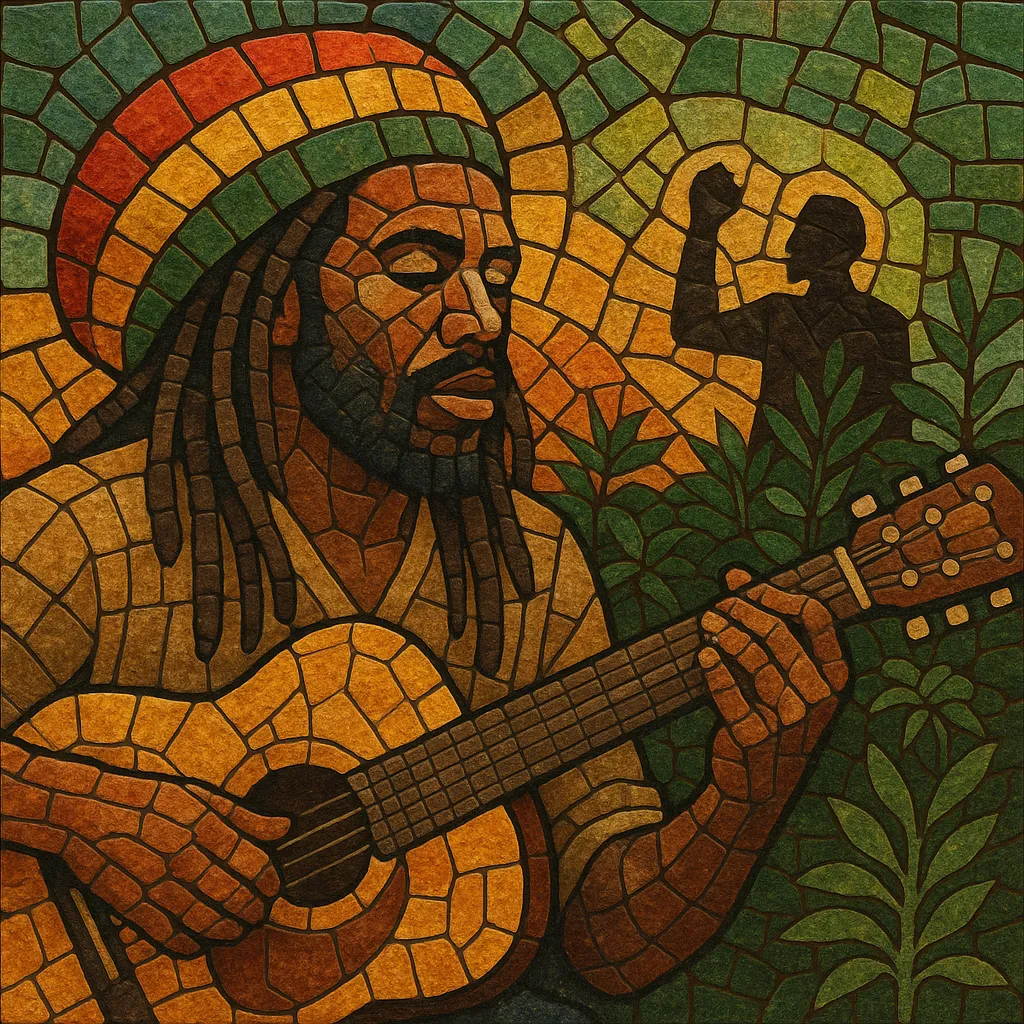Roots reggae is a spiritually and socially conscious strand of reggae that emerged in Jamaica in the early to mid-1970s.
It emphasizes Rasta themes, African identity, resistance to oppression, and everyday struggles, delivered through soulful vocals and storytelling lyrics.
Musically, it features the one‑drop drum pattern, heavy melodic basslines, offbeat "skank" guitar/piano, warm Hammond/organ bubbles, and spacious, dub-influenced production.
Tempos are moderate and rolling, the grooves are hypnotic, and the arrangements leave space for call‑and‑response, harmony vocals, and horn counter‑melodies.
Roots reggae grew out of the evolution from ska to rocksteady to reggae in Jamaica. As the Rastafari movement’s visibility increased, musicians embedded spiritual consciousness, Pan‑Africanism, and social critique into reggae’s rhythmic framework. The one‑drop drum feel, deep bass, and offbeat guitar/piano became the bedrock while lyrical themes turned explicitly devotional and political.
The mid‑1970s marked the style’s peak, with artists such as Bob Marley & The Wailers, Burning Spear, Culture, The Abyssinians, and Peter Tosh defining its sound and message. Producers and studios (Channel One, Studio One, Black Ark) and visionary engineers incorporated dub aesthetics—spring reverb, tape delay, and creative mixing—into roots albums and versions, creating a spacious, meditative sound.
International touring and major‑label releases carried roots reggae worldwide. UK scenes birthed bands like Steel Pulse and Aswad, while the style inspired political and spiritual music movements across Africa, the Pacific, and the Americas. Although dancehall rose in the 1980s, roots persisted through vocal trios, harmony groups, and live band culture.
Periodic revivals (e.g., the "reggae revival" in Jamaica and international neo‑roots movements) reaffirmed roots reggae’s relevance. Its rhythmic language and thematic focus on justice and uplift continue to inform dub, lovers rock, dancehall foundations, reggae rock, and Pacific reggae. Roots remains a touchstone for socially engaged popular music.


